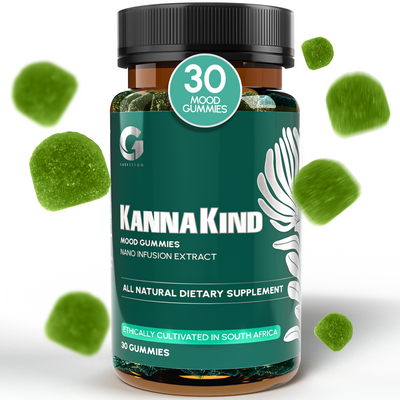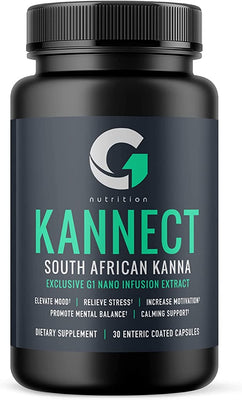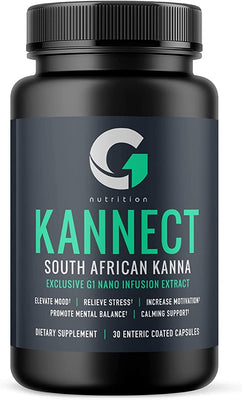Introduction
Sceletium tortuosum, more commonly known as Kanna, has been used for centuries in its native South Africa for its unique effects on mood and well-being. Today, this fascinating botanical is gaining global attention as a powerful ingredient in dietary supplements. As more people seek natural ways to support their mental and emotional health, interest in Kanna has skyrocketed.
This guide provides a comprehensive review of what makes Kanna work and what responsible manufacturers must consider. We will explore its efficacy, safety profile, quality control standards, and the marketing and regulatory guidelines that ensure consumers get a safe, reliable product. For both brands and informed consumers, understanding these frameworks is key to navigating the world of Sceletium supplements.
Pharmacological Efficacy and Evidence Base
The positive feelings people associate with Kanna aren't just folklore; they are rooted in the plant's unique chemistry. The science behind Sceletium pharmacology helps explain how it supports mood, focus, and a sense of calm.
Active Alkaloids and Mechanisms of Action
Kanna’s benefits come from a group of active compounds called alkaloids. The most well-known of these are mesembrine, mesembrenone, and mesembrenol. Each plays a distinct role, and their combined effect is what makes Kanna so special.
Think of your brain as having a complex communication system that uses chemical messengers. One of these key messengers is serotonin, which helps regulate mood, happiness, and anxiety. Kanna’s primary mechanism of action involves acting as a serotonin reuptake inhibitor. In simple terms, it helps keep more serotonin available in your brain, which can lead to an elevated mood and a greater sense of well-being.
Additionally, certain Kanna alkaloids are known to be PDE-4 inhibitors. This action is linked to supporting cognitive function, improving focus, and promoting mental clarity. The synergy between these pathways is what creates Kanna’s balanced, multi-faceted effects.
Preclinical and Clinical Evidence
Scientific interest in Kanna has led to a growing body of research. Early preclinical studies, including lab-based and animal research, first highlighted Kanna’s potential for mood support and stress reduction. These findings paved the way for human clinical trials.
Human studies have further explored Kanna's effects on mood, resilience to stress, and cognitive function. While the evidence base is promising and continues to expand, it's important to recognize its limitations. Many studies are small or preliminary, and more large-scale research is needed to fully confirm the breadth of Kanna’s benefits. However, the existing data provides a strong foundation for its use as a dietary supplement.
Translational Relevance for Supplement Formulation
Understanding the science behind Kanna has direct implications for creating effective supplements. For manufacturers, it's not enough to simply include Kanna in a product. The key is to use a high-quality extract with a carefully balanced profile of active alkaloids.
This is where Sceletium tortuosum standardization becomes critical. A standardized extract ensures that every batch of a product delivers a consistent amount of mesembrine and other key compounds. This allows for reliable dosing and predictable effects. The scientific evidence guides manufacturers in determining the right potency and form—whether it's a capsule for daily support or a gummy for a calming treat—to deliver the desired functional benefits safely and effectively.
Safety Assessment
For any dietary supplement, safety is the top priority. Kanna has been used traditionally for hundreds of years and is generally considered safe when used as directed. However, like any active botanical, it’s important to understand its safety profile, potential interactions, and who should use it with caution. Proper herbal extract safety protocols are essential.
Toxicology and Adverse Effects
Studies have examined the toxicology of Kanna extracts to establish safe consumption levels. Within recommended dosages, Kanna is well-tolerated by most people. Side effects are uncommon but can include mild headache, lightheadedness, or temporary digestive upset, especially when first starting.
These effects are typically mild and often resolve as the body adjusts. Starting with a lower dose can help minimize any potential discomfort. Responsible brands provide clear dosage instructions to ensure a positive and safe user experience.
Drug Interactions and Contraindications
This is the most critical aspect of Kanna safety. Because Kanna works on the serotonin system, it should never be combined with certain medications. This includes:
- SSRIs (Selective Serotonin Reuptake Inhibitors): Common antidepressants like Prozac, Zoloft, and Lexapro.
- MAOIs (Monoamine Oxidase Inhibitors): Another class of antidepressants.
Combining Kanna with these drugs can lead to a dangerous condition called serotonin syndrome, where there is too much serotonin in the brain. Symptoms can range from mild to severe, so this combination must be avoided.
Out of an abundance of caution, individuals who are pregnant, breastfeeding, or have known medical conditions should consult their doctor before using any Kanna supplement. It’s a foundational principle of dietary supplement regulation and consumer safety.
Gaps in Safety Data
While Kanna has a strong safety record for short-term use, there are still some gaps in the scientific literature. More research is needed to fully understand the effects of long-term, continuous use, as well as the impact of very high doses. As the market for Kanna grows, ongoing research in these areas will be vital to further solidify its safety profile and provide even clearer guidance for consumers.
Featured Products
Quality Control and Standardization
Not all Kanna supplements are created equal. The difference between an effective, reliable product and an ineffective one often comes down to Kanna quality control. For manufacturers, maintaining high standards from sourcing to final product is non-negotiable.
Batch Consistency and Extract Standardization
The key to a trustworthy Kanna supplement is batch consistency. Consumers should have the same experience every time they use a product. This is achieved through extract standardization, which ensures that each batch contains the same concentration and ratio of active alkaloids.
Advanced analytical methods are used to verify this consistency. Techniques like High-Performance Liquid Chromatography (HPLC), Liquid Chromatography–Mass Spectrometry (LC–MS), and Gas Chromatography–Mass Spectrometry (GC–MS) allow scientists to precisely measure the levels of mesembrine and other key compounds. This guarantees that the product meets its label claims for potency.
Contaminant Testing
A pure product is a safe product. Rigorous quality control must include testing for potential contaminants. This includes:
- Heavy Metals: Testing for lead, mercury, arsenic, and cadmium is crucial, as these can accumulate in botanicals from the soil.
- Microbial Load: Products must be screened for harmful bacteria, yeast, and mold to ensure they are safe for consumption.
- Adulteration: Unfortunately, some low-quality supplements may be spiked with synthetic ingredients or diluted with fillers. Testing helps confirm the extract is pure Sceletium tortuosum.
Best Practices for Manufacturers
Reputable manufacturers follow strict best practices to ensure quality. This includes implementing Standard Operating Procedures (SOPs) for every step of the production process. They should also be able to provide a Certificate of Analysis (COA) for each batch. A COA is a document from a third-party lab that verifies the potency and purity of the product.
Having a strong internal quality control program, combined with third-party verification, is the gold standard for supplement manufacturing. It builds trust and demonstrates a commitment to regulatory compliance and consumer safety.
Marketing and Regulatory Considerations
Bringing a Kanna supplement to market involves navigating a complex web of marketing rules and dietary supplement regulation. Adhering to these guidelines is essential for building a credible brand and protecting consumers.
Claims and Labeling Guidelines
In the United States, dietary supplements are regulated by the FDA. Brands are allowed to make "structure/function" claims, which describe how an ingredient supports the normal structure or function of the body. For Kanna, acceptable claims might include statements like:
- "Supports a positive mood"
- "Helps promote a sense of calm"
- "Supports mental focus"
However, it is illegal to make therapeutic or disease claims. A supplement cannot be marketed as a treatment, cure, or prevention for any disease, such as depression or anxiety. Any brand making such claims is violating FDA regulations and misleading consumers. All labels must also include a disclaimer stating that the product has not been evaluated by the FDA and is not intended to diagnose, treat, cure, or prevent any disease.
Regulatory Oversight
Different countries and regions have their own regulatory frameworks. In the U.S., the FDA oversees supplements under the Dietary Supplement Health and Education Act (DSHEA). In Europe, the European Food Safety Authority (EFSA) plays a similar role, while the UK has its own guidance through the Office for Product Safety and Standards (OPSS).
Some jurisdictions may classify Kanna or its extracts as a "novel food," which requires a pre-market safety assessment before it can be sold. Manufacturers must stay informed about the specific rules in each market where they operate to ensure full regulatory compliance.
Consumer Safety Monitoring and Reporting
A brand’s responsibility doesn’t end once the product is sold. Reputable companies have systems for post-market surveillance, including monitoring for any adverse event reports. This allows them to quickly identify any potential safety issues and take appropriate action. This ongoing commitment to safety is a hallmark of a trustworthy and transparent brand.
Gaps in the Evidence and Future Directions
The future for Kanna is bright, but there is still work to be done. Researchers, manufacturers, and regulators all have a role to play in building upon the existing knowledge base. Key areas for future focus include conducting more large-scale, multi-center clinical trials to provide more robust data on long-term efficacy and safety.
Furthermore, continued improvements in Kanna quality control and standardization will help elevate the entire industry. As regulatory frameworks evolve, a collaborative approach between industry and government bodies will ensure that consumers continue to have access to safe, high-quality Kanna products that deliver on their promises.
Summary and Recommendations
Sceletium tortuosum is a remarkable botanical with a strong scientific basis for its mood-supporting and cognitive-enhancing effects. Its efficacy is tied to a unique profile of alkaloids that work on serotonin and other brain pathways. While generally safe, it carries a critical contraindication with SSRI and MAOI medications.
For manufacturers, the path to a successful Kanna product is paved with a commitment to quality. This means prioritizing Sceletium tortuosum standardization, rigorous contaminant testing, and complete transparency. Adhering to marketing regulations and avoiding illegal disease claims is not just a legal requirement but a moral one.
For consumers, the key is to choose products from brands that openly discuss their quality control measures and provide clear, compliant information. By understanding what makes a great Kanna supplement, everyone can help foster a responsible and trustworthy market.



